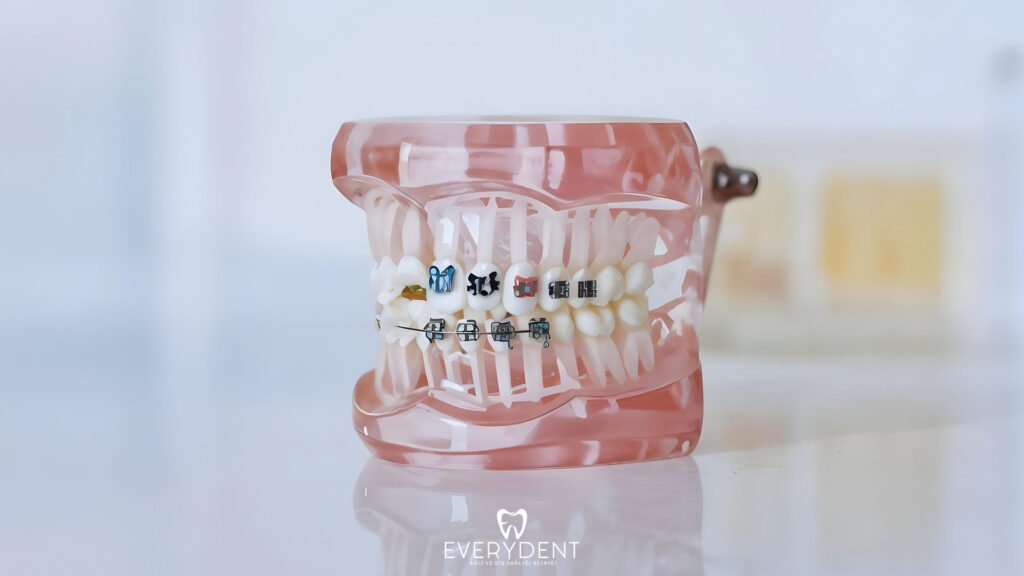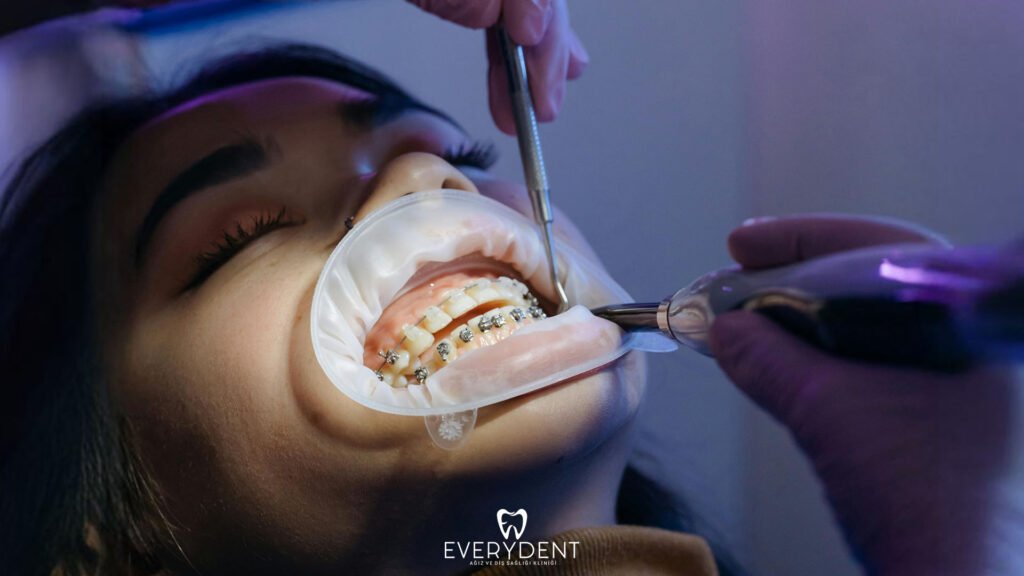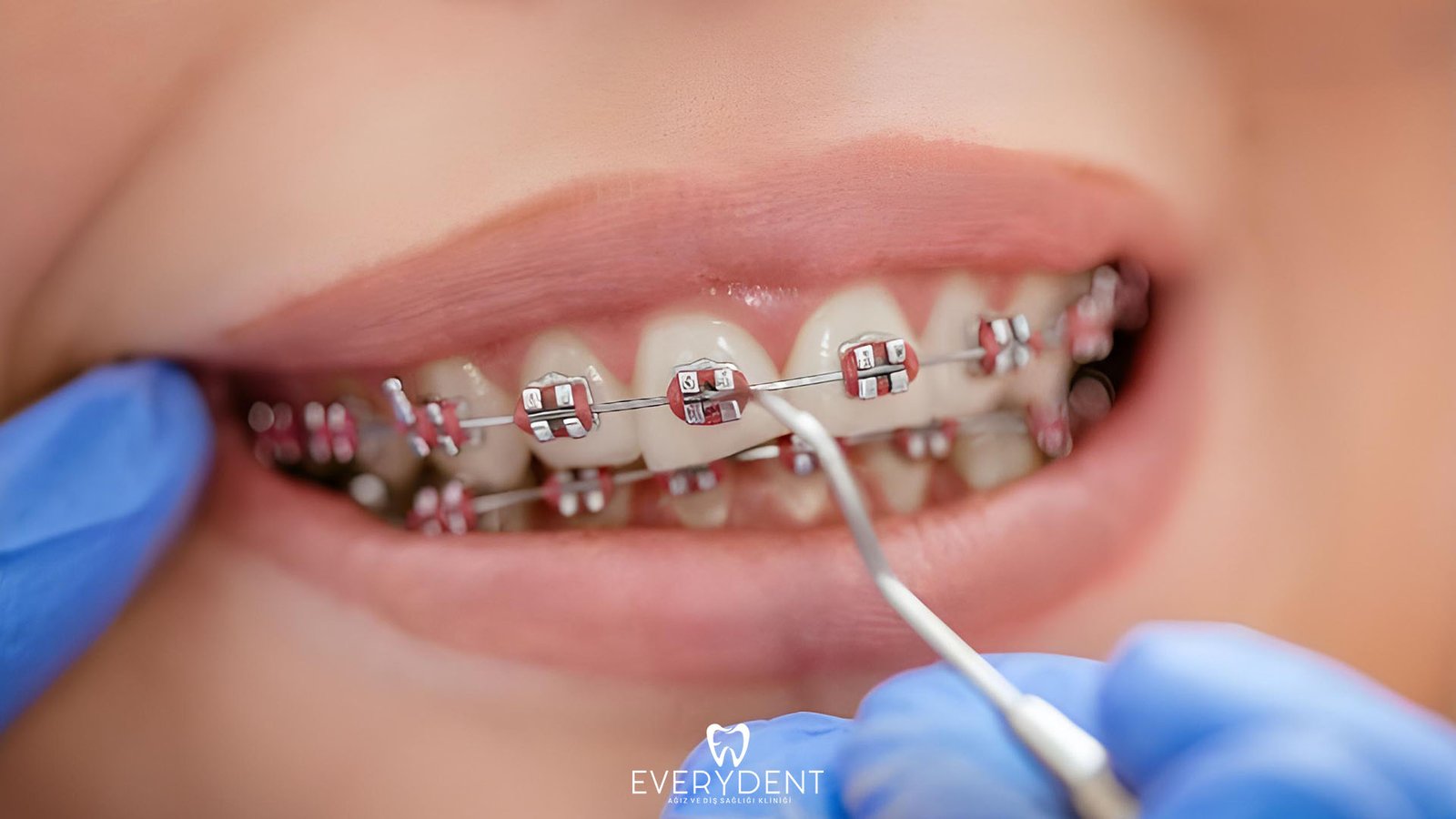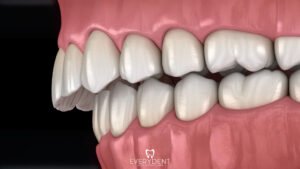Braces Treatment
Braces are an orthodontic treatment tool used to ensure the correct alignment of the teeth and to correct disorders in the jaw structure. Generally produced from metal, ceramic or transparent materials, braces consist of brackets placed on the teeth and wires connecting these brackets together. This treatment method applied by the orthodontist applies gentle pressure to the teeth and jaw over time, allowing the teeth to move to their ideal positions.
Braces treatment not only provides an aesthetic smile, but also significantly improves oral and dental health. When problems such as crooked teeth, malocclusion or jaw imbalances are resolved with the right treatment, chewing functions are improved and gum health is maintained. Today, with the development of technology, there are various options such as transparent aligners and porcelain brackets that address the aesthetic concerns of patients.

Why is Brace Treatment Necessary?
Braces treatment not only provides an aesthetic appearance, but is also of great importance for oral and dental health. Teeth that are not properly aligned can negatively affect chewing function, cause jaw joint problems over time, and increase the risk of tooth decay and gum disease because they are difficult to clean. Thanks to the treatment, crooked and misaligned teeth are corrected, preventing problems in the jaw structure, increasing self-confidence with a more aesthetic smile, oral hygiene becomes easier thanks to properly aligned teeth, and pain that may occur in the jaw joint can be eliminated.
Up to What Age Can Braces Be Weared?
Braces treatment can be applied to all age groups, from children to adults. It is generally recommended to start treatment in children from the age of 7-8. Since jaw development continues during this period, problems can be corrected more easily. However, braces treatment is also quite common in adults. Especially thanks to aesthetic solutions such as transparent aligners, adults can have a more comfortable treatment process in their daily lives.
Types of Braces
It can be applied in different types according to the needs and preferences of our patients. The main types of braces used today are:
- Metal Braces: These are the most commonly used braces. Although they are durable and effective, they may not be preferred by some people due to aesthetic concerns.
- Ceramic Brackets: They are less noticeable because they are close to the tooth color. Although it offers an aesthetic appearance, it is more sensitive than metal brackets.
- Lingual Brackets: They are placed on the back surface of the teeth, so they are not visible from the outside. However, it is a little more challenging in terms of use and cleaning.
What Not to Eat When You Have Braces
During braces treatment, it is important to avoid certain foods in order to go through the treatment process smoothly and to ensure that the braces work properly. The most important factor to consider when eating with braces is to prevent damage to the braces and brackets. Hard, sticky, or excessively sugary foods can damage braces, dislodge them, or cause brackets to fall out.
Foods to avoid when you have braces include:
- Hard foods: Foods such as walnuts, hazelnuts, hard candies, pop corn can damage braces and dislodge brackets.
- Sticky foods: Sticky foods such as gum, candies, and caramel can stick to the braces, making cleaning difficult and causing plaque accumulation on the teeth.
- Very hot or cold foods: Extremely hot or cold foods can cause the metal in the wires to expand and contract, making the treatment process more difficult.
- Acidic foods and drinks: Lemon, acidic fruits, acidic drinks (e.g. carbonated drinks) can have a corrosive effect on tooth enamel.
- Soft drinks: Sugary drinks can have an acidic effect that can lead to tooth decay.
For this reason, during the brace treatment process, soft, non-acidic, non-sticky and non-hard foods should be preferred. Regular teeth cleaning is also of great importance while wearing braces.

Things to Consider During Braces Treatment
Extra care should be taken for oral hygiene when using braces. Brackets can create environments suitable for food debris and plaque accumulation. Therefore, regular brushing and flossing of teeth is very important. Additionally, hard and sticky foods should be avoided.
Dental Braces Prices 2025
Braces prices may vary depending on the treatment duration, the type of material used and the treatment plan the orthodontist will apply. While metal braces are generally more affordable than ceramic or clear braces, less aesthetically visible options may have higher costs. Additionally, the treatment process and clinic selection may also have an impact on the price. Another factor that determines the cost of braces treatment is the treatment duration and the necessity of regular checks. Since each individual’s needs are different, a detailed conversation with the orthodontist for a personalized treatment plan can provide clearer information about the price.




